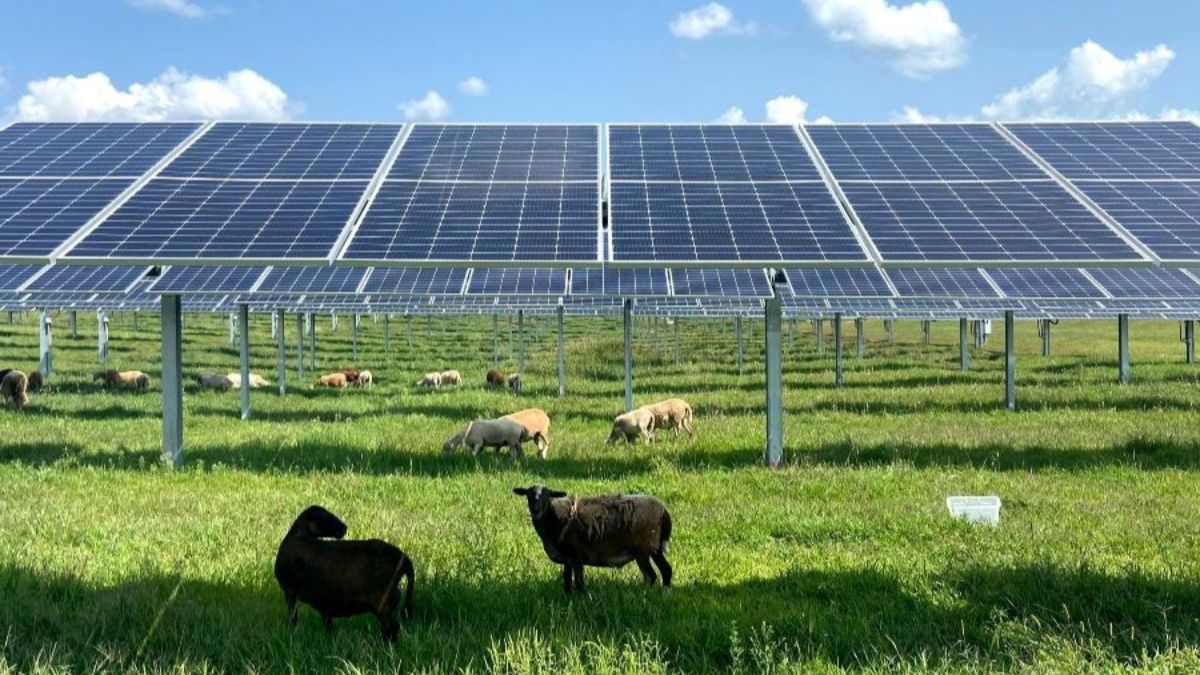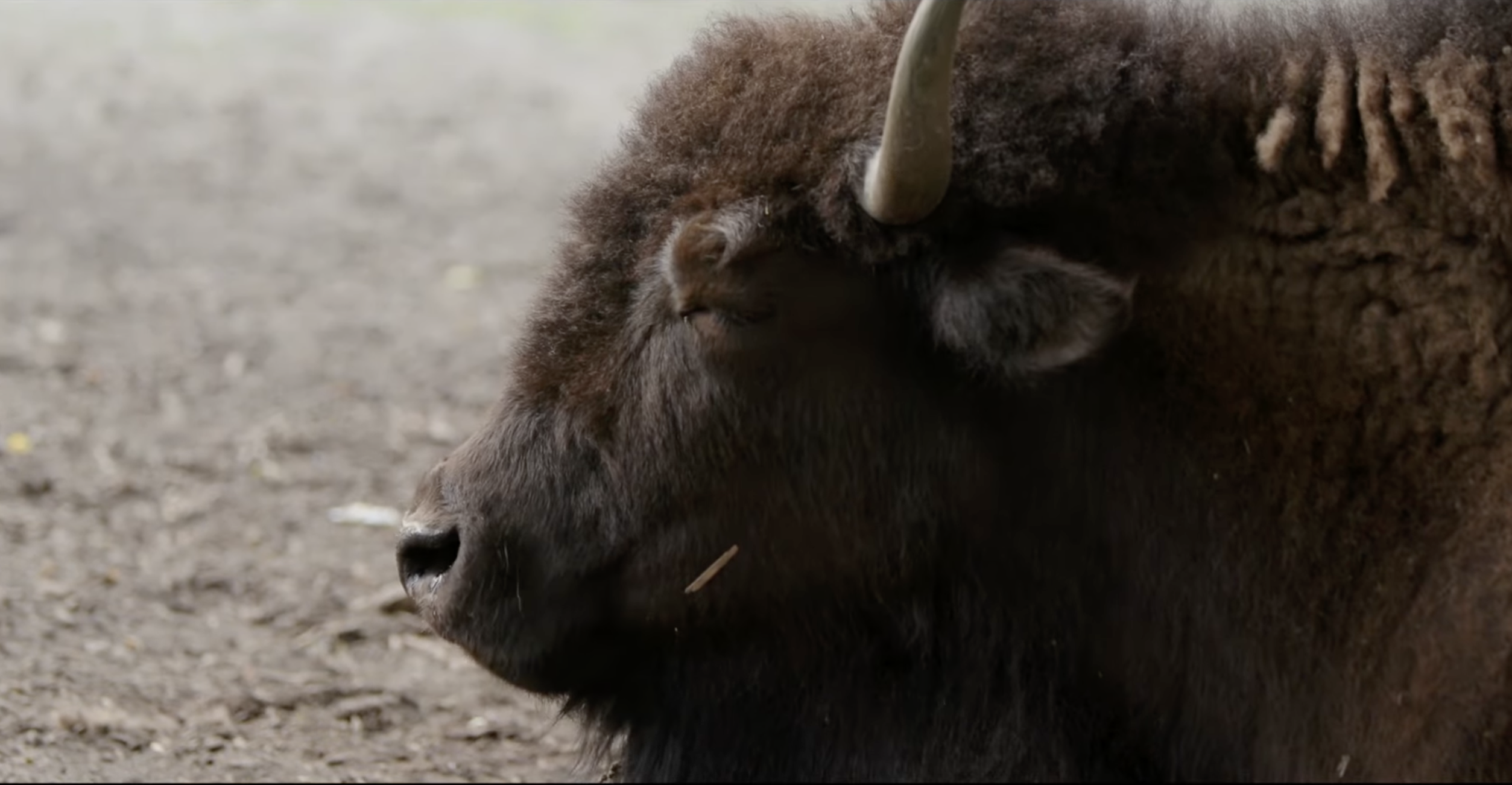Welcome to the inaugural issue of The Dirt, a newsletter that will dig into a variety of climate topics. We are excited to better connect you with the communities and landscapes home to the projects you’ve helped us create, with our awesome team and partners, and thought leadership on how we can, together, continue to take climate action.
At Native, we believe in finding solutions, taking action, and putting our money on the line to catalyze new climate action, and we think you probably do too. In our 21st year of business, we remain committed to learning, and sharing what we learn, as we create lasting change with you.
From the Community
Solar panels are on the move and on the farm. Solar developers have discovered several ways to boost the amount of energy each panel generates and the value each installation produces. With single axis tracking systems, solar panels efficiently track the sun throughout the day – as you can see in this time lapse video – optimizing energy production. Panel productivity also increases when, in lieu of gravel, developers plant functional seed mixes underneath panels such as pollinator-friendly plantings, forage for sheep to graze, or even crops (“agrivoltaics”), which help to cool panels on hot days, increasing total energy output while providing additional benefits. We believe renewable energy projects should always find ways to maximize both energy and land use benefits. The two most recent installations in our New Renewables Portfolio highlight these opportunities.

From our Team
We are excited to share with you this new paper in Frontiers in Ecology and Evolution. Co-authored by our Director of Business Development Jonny BearCub Stiffarm, it lays out the multi-faceted benefits of repatriating bison on tribal lands if it is done in a way that meets Tribal community needs and aspirations. Jonny is a member of the Ptė Group, a grassroots volunteer group of the Fort Peck Tribe, which surveyed community members to understand their desires for engaging with bison reintroduction efforts. The group used those results to design programs that enable these powerful benefits. And wow, have they been busy! First, the Group worked with Head Start to create a curriculum where preschoolers learn the history and cultural significance of bison and take a springtime trip to visit with their local cultural herd. Then, the Group worked with WWF to develop a community-based bison conservation and harvesting program, which gives families the opportunity to participate in a traditional bison harvest. Now, the Ptė Group is working with MSU, the Fort Peck Community College, community members, and the Tribal Economic Development and Tribal Executive Board to develop a 7-mile trail with art installations within the buffalo pasture for tribal members and tourists to visit. Through collaboration, community consultation, and a lot of time and heart, the Ptė Group is making the community’s vision for buffalo restoration at Fort Peck a reality and leaving a powerful legacy for future generations. Congratulations, Jonny!

Spotlight: Climate-Friendly Running
This spring, Allbirds and Adidas publicly launched, as a result of their partnership, a performance running shoe with little to no carbon footprint. At 2.94kg CO2e per pair, Adidas and Allbirds are setting the standard for minimizing the emissions footprint and optimizing impact measurement and collaboration in the footwear industry. Congratulations! We’re excited to see what’s next!
Speaking of running, can you guess what the main source of emissions is for mass participation running events? The Council for Responsible Sport identified that 98.5% of emissions from these events derive from participant travel. For race directors who aren’t ready to take their races virtual, encouraging carpooling and the use of public transit can help reduce the event’s footprint. Our friend Terry Chiplin, Director of the US Trail Running Conference, has cast the growing trail running industry’s eye towards its climate impacts.
Spotlight: Regenerative Grazing
Our Northern Great Plains Regenerative Grazing project has been validated! Cue CHEERS! It is the first U.S. regenerative grazing carbon project to be validated by Verra, the world’s most widely used voluntary GHG program. Validation represents Verra’s stamp of approval that our project is effectively designed to generate verifiable carbon benefits. Congratulations to so many of you, for supporting this project early, bringing critical financing to a group of visionary ranchers in 2019 so that their work could begin.
So what is this project’s design? It creates a vehicle for companies to help ranchers transition to improved grazing practices (think: moving cattle more frequently through smaller pastures) by providing upfront funding and support. Funding this work early helps cover the costs of the transition, such as new fencing, water infrastructure, labor, and training. The improved grazing practices give the grass time to rest and recover, increasing soil carbon inputs and soil carbon storage in the soil over time. We monitor and quantify the impact of these practices through both physical soil sampling and annual data collection on grazing plan implementation, weather, and satellite data on each ranch. We established baseline soil carbon levels via soil sampling in 2019 and will measure soil carbon at intervals over the 20-year operating life of the project. Now, our work continues to expand the project’s impact.
That’s it for now! We will be digging around for news to bring you in our next installation of The Dirt. Until then, keep up the good climate work and reach out to us with your feedback on this first issue. We welcome your thoughts, questions, and ideas for spotlights!

